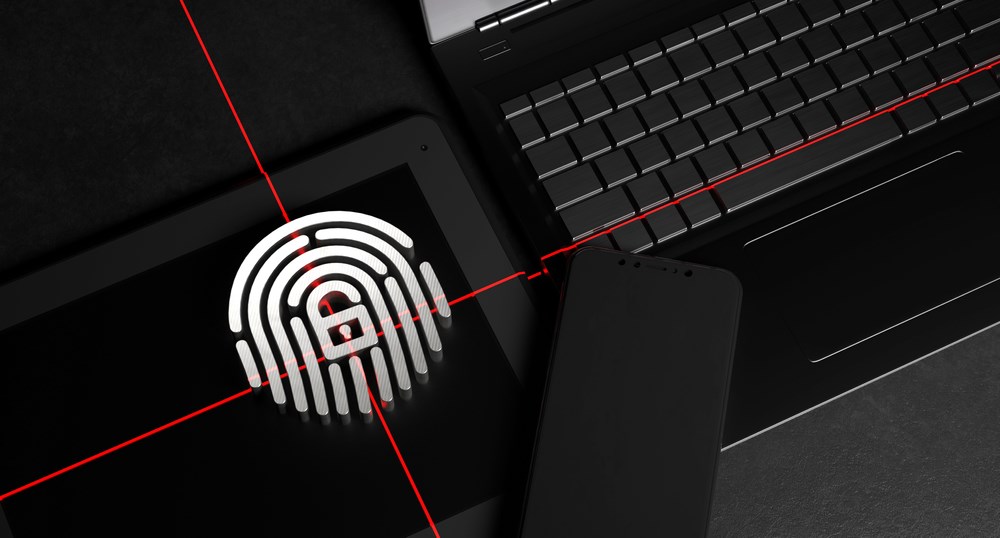Before the COVID-19 pandemic, the banking sector had already begun its shift towards digitalisation to combat evolving threats. However, the pandemic accelerated this process, leading to a sudden increase in remote access, cloud-native technologies, and cashless transactions.
Today, the future of banking depends on embracing new-age technology, mobile banking, and digital-first business models while ensuring strong security measures. Global digital transactions are projected to reach $6.7 billion in 2023. This shift towards digitalisation has allowed for enhanced customer experiences and new revenue streams within the banking sector. However, it also brings heightened risks of data breaches and cyberattacks, underscoring the importance of cyber security in banking sector operations.
As per reports, 7.4% of targeted attacks in 2022 were directed at the Indian subcontinent, highlighting the need for effective cybersecurity solutions.. India has emerged as Asia's new hotspot for cyber-attacks, and the cyber intelligence firm attributes the rise in crime to increased digitalisation and online banking systems.
This highlights the importance of cybersecurity in banking as it becomes an increasingly critical aspect of the industry's future.
What is Cyber Security in Banking Sector? A Comprehensive Definition
Cybersecurity in banking refers to the measures taken by financial institutions to protect their systems and networks from cyberattacks. With the increasing reliance on technology in the banking sector, the need for robust cybersecurity measures has never been greater.
Banks and financial institutions employ various tools and technologies designed to detect and prevent cyberattacks in the form of hacking, data breaches, identity theft, malware, viruses, and unauthorised access to networks and sensitive data.
Importance of cybersecurity in banking sector
The primary goal of cybersecurity in banking sector is to safeguard customer assets.
A cyber-attack on a bank can not only result in the loss of valuable information but can also disrupt the normal functioning of the bank, causing inconvenience to customers and potentially leading to financial losses.
Banks implement various cybersecurity measures to combat these cyber security threats, including firewalls, intrusion detection systems, and encryption. They also employ teams of security experts who monitor the network for suspicious activity and respond quickly to any potential threats.
Additionally, malicious attacks that target the customer’s wealth and personal financial information can also compromise the bank’s reputation and credibility, making cybersecurity measures crucial not only to ensure financial cybersecurity but also to protect the bank’s intangible assets, such as goodwill and brand equity.
Key Cyber Security Threats and Challenges Facing Banks Today
According to recent reports, Indian banks reported 248 data breaches from 2018 to 2022. The Government of India reported 11,60,000 cyberattacks instances in 2022, a staggering increase from previous years, highlighting the need for top cybersecurity measures. Cyber security threats in the banking sector are growing exponentially.

Here’s a rundown of some of the biggest cyber security threats facing the banking industry today
- Phishing and Social Engineering in Financial Services
These are among the most common cyberattack methods in financial sectors. Phishing aims to extract confidential information such as passwords and credit card numbers by posing as a reliable entity.
Social engineering is a more significant financial cybersecurity threat involving technical subterfuge and highly targeted attacks to defraud users of their financial assets.
- Malware and Ransomware Attacks on Banking Systems
Due to distributed networks and remote servers, banking malware and ransomware attacks are on the rise. They primarily target smaller banks with outdated technologies and cybersecurity protocols.
- Cloud Security Risks for Financial Institutions
The cloud hosts a wealth of software and sensitive data. Although cloud migration is essential for modern banking services, attacks on cloud service providers and global outages can severely compromise security.
- Supply Chain Vulnerabilities in Banking Technology
Supply chain attacks target a software vendor and corrupt products and updates across the entire chain with malicious code. These attacks enable the miscreants to hack into several customer networks.
- Remote Access and Mobile Banking Security Concerns
Remote-working employees use multiple access methods and often work from locations that lack adequate cybersecurity. Moreover, digital-first customers access their accounts from mobile apps rather than physical banking locations. This increases the risk of data breaches and financial cybersecurity threats.
Addressing these vulnerabilities through awareness, education, and frontline security software is possible.
Strategies for Enhancing Cybersecurity in Banking Institutions
Banking institutions must develop a comprehensive defence approach to cybercrime and focus on prevention rather than cure to address emerging cyber threats. Here are a few tools and best practices to ensure Cybersecurity in banking
- Implementing a robust security framework:
This includes developing a comprehensive security plan covering all aspects of the bank's operations, from network security to incident response. This plan should be based on industry standards and best practices, such as ISO 27001, to enhance cybersecurity in banking.
- Regular Cyber Risk Assessments and Vulnerability Management
Banks should conduct regular cyber risk assessments to identify potential vulnerabilities and threats to their systems and networks. This will help them prioritise their security efforts and protect the most critical assets.
- Strengthening Authentication: Multi-Factor Authentication (MFA)
Banks should require multiple forms of authentication, such as a password, fingerprint, or a security token, to access sensitive information and systems. This makes it much harder for attackers to gain access.
- Data Encryption: Protecting Sensitive Financial Information
Banks should encrypt all sensitive data, both in transit and at rest, to protect it from cyber threats and unauthorised access.
- Regularly monitoring and testing security systems:
Banks should implement monitoring and testing tools to promptly detect and respond to security incidents, addressing potential insider threats. This includes regular penetration testing, vulnerability scanning, and security audits.
- Employee Cybersecurity Training and Awareness Programs
Banks should provide regular training to their employees on how to identify and prevent security threats, as well as on the bank's security policies and procedures.
- Maintaining an incident response plan:
Regularly updating their incident response plan helps banks handle security breaches effectively.
- Managing third-party vendors:
Banks should have a thorough vendor evaluation program in place to ensure that third-party vendors comply with the bank's security standards.
- Continuously monitoring and updating:
Cybersecurity is a continuous process, and banking institutions should keep updating and monitoring their security systems and protocols to stay ahead of the threats.
- Leveraging Credit Risk Analytics for Enhanced Security
Credit risk data is a vital indicator of a potential client’s creditworthiness and reliability. Deploying risk analytics in banking is a critical way to boost security.
Is your bank prepared to handle today’s most advanced cyber threats?
Don’t wait until a breach occurs—request a complimentary cyber risk assessment from CRIF’s experts and get actionable insights to strengthen your institution’s defences.
How CRIF Solutions Strengthen Cybersecurity for Banks
Our comprehensive suite of offerings is designed to address the multifaceted challenges of the modern banking landscape, ensuring both data integrity and operational continuity. Here's how CRIF's expertise and solutions contribute to enhanced cybersecurity in the banking sector:
- Advanced Fraud Management and Prevention:CRIF's fraud management solutions leverage sophisticated analytics and real-time data to detect and prevent fraudulent activities, including phishing, identity theft, and application fraud. By analyzing behavioral patterns and transactional anomalies, we help banks proactively identify and mitigate risks, safeguarding both institutional assets and customer accounts.
- Comprehensive Business Information and Risk Assessment: Our extensive database of business information and advanced analytical tools enable banks to conduct thorough due diligence on third-party vendors and partners. This helps in identifying potential supply chain vulnerabilities and ensuring that all entities within the banking ecosystem adhere to stringent security standards.
- Secure Open Banking Solutions: As open banking continues to reshape the financial landscape, CRIF ensures secure data aggregation and access. Our solutions facilitate the secure exchange of financial information with customer consent, providing AI-driven insights that enhance customer experiences while maintaining the highest levels of data privacy and security.
- Credit Risk Analytics for Proactive Security: Beyond traditional credit assessment, CRIF's credit risk analytics are instrumental in identifying potential security risks. By integrating creditworthiness data with behavioral analytics, banks can gain deeper insights into customer profiles and transactional patterns, enabling the early detection of anomalies that may indicate fraudulent activity or security breaches.
About CRIF
CRIF is a global company specialising in credit bureau and business information, outsourcing and processing services, credit solutions, and digital offerings. CRIF is ranked amongst the prestigious top 100 IDC Fintech Rankings. CRIF has a global presence, operating over four continents (Europe, America, Africa, and Asia).
With more than 10,500 financial institutions and 600 insurance companies, CRIF's services are used by more than 82,000 companies and 1,000,000 consumers, enhancing their data security. We are on a mission to create value and new opportunities for banks, financial institutions, utility companies, and other businesses eager to innovate and help them accelerate digital transformation in digital banking.
At CRIF, we serve our clients with knowledge, commitment, and passion for helping them to grow together to the next level.
Conclusion: Securing the Future of Banking with Advanced Cybersecurity
The digital transformation of the banking sector, while offering unprecedented opportunities, also introduces complex cybersecurity challenges. As cyber threats continue to evolve in sophistication and scale, financial institutions must adopt a proactive, multi-layered defense strategy. By understanding the critical importance of cybersecurity, recognizing the prevalent threats, and implementing effective strategies – supported by advanced solutions like those offered by CRIF – banks can not only protect their invaluable assets and customer trust but also ensure sustainable growth in the digital age.

